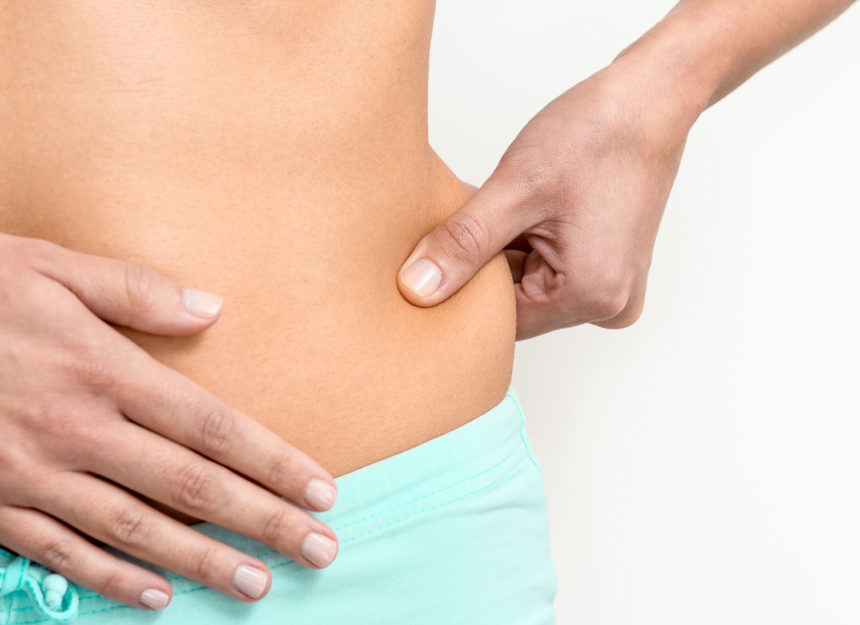Cellulite is one of the most controversial issues of all times; even structural cellulite is no exception.
Cellulite: the name already arouses much discussion and from the medical point of view it is called Edematous Fibrosclerotic Panniculopathy, or EFP for short; for reasons of simplification the term cellulite is now commonly used without too many distinctions.
Disease or blemish?
Another controversy concerns how cellulite should be considered: is it a real disease or not?
Real: For many doctors, cellulite is a real disease that does not endanger life but requires a cure and treatment.
Not real: for others it is simply a blemish that should therefore be treated as such.
Real and not real: it is not a real disease, but it should not be underestimated or even not taken into consideration.
The causes.
The causes of cellulite are also somewhat controversial: there may be multiple aggravating causes and factors, but so far, they are based on theories that have, to a greater or lesser extent, been accepted by the scientific community.
The treatments.
All treatments seem to promise miracles but there may be improvements on the appearance of cellulite and increasingly often combined treatments are recommended in order to obtain more evident results. The duration of treatments is controversial: are they temporary or long-term? The results vary widely from person to person.
Another thorny issue is the results of treatments combined with diet and physical activity. Many claim that effective results are not produced by treatments but by a change of lifestyle, so diet and physical activity. Yet it would appear that even those who are thin and sporty have cellulite in areas where physical exercise and diet do not solve the problem.
Is cellulite only for females? It would appear not; some data speak of male cellulite, with 4 in 10 men suffering from it.
Structural cellulite: how cellulite is formed
Speaking of theories, here are some details about structural cellulite. The mechanisms leading to the formation of cellulite are complex, but in general there are important alterations of the adipocytes which can be summarised in this list:
- adipocytes increase in volume
- adipocytes increase in number
- adipocytes undergo a change in shape
These changes are followed by:
- division and reduction of adipose tissue
- neoformation of collagen fibres
- thickening
- encapsulation
- formation of micronodules
- visible micronodules follow
- the fibrous septae of connective tissue undergo hardening
- followed by their anchoring of the skin downwards
- compression of the adipose tissue towards the dermis
- orange peel skin appearance
What are the stages of structural cellulite?
As we have seen, there is a very precise pattern in which cellulite is formed according to various phases.
These phases can be summarised as follows:
- Initial and intermediate phases 1 and 2
- deterioration of the dermis of the skin begins
- the dermis begins to lose part of its capillary network
- aggregation of fat cells begins
- fluids begin to accumulate in the tissue
- increase in liquid retention
- skin deterioration continues
- microcirculation is further reduced
- increase in adipose cell enlargement
- significant reduction in the activity of collagenases and elastases
- “orange peel” appearance of the skin is now evident.
- Final phases 3 and 4 of the process
- metabolism in the cells of the dermis slowed down
- protein deposits begin to form around the fat cells
- hard nodules are evident in the cutaneous region
- adipose cells are encapsulated in a shell of hardened proteins
- fibrous septae anchor downwards
- “mattress” effect
What are the causes of cellulite as a structural alteration?
There may be various causes; among the most common are:
- molecular changes
- structural alterations
- retention of fluids and toxins
- reduction of collagen and elastin
- bad circulation (blood and lymphatic)
Structural cellulite: the differences between males and females
The structure of the hypodermis is different between males and females, with a greater or lesser predisposition of the fibrous septae to pull downwards and give the skin the orange peel appearance. Some studies have shown that men with more feminine features tend to have a hypodermis similar to that of a woman, therefore it would appear that there is hormonal involvement which determines structural differences.
Structural cellulite: treatments on the structure of cellulite
When it comes to treatments on structural cellulite, we should mention treatments which, using various techniques, cut the fibrous septae; these are the structural cause of the skin’s orange peel appearance because, at an anatomical level, the fibrous septae pass vertically through the adipose tissue.
It is these fibrous septae that cause depressions and irregularities in the surface of the skin, with that typical irregular skin effect.
Intervention on the fibrous septae is possible using surgical techniques or using a minimally invasive technique which, based on the theory of the fibrous septae, acts by cutting the fibrous septae in a precise and controlled manner with a
tissue stabilized guided subcision , obtaining release of the dermis and thus making it become more homogeneous.
This technique has also obtained Food and Drug Administration (FDA) certification. Thanks to this technique, it is possible to intervene on the fibrous septae in a selective and controlled manner, minimising the side effects, and allowing perfect control of depth and area of intervention.
Disease or simple blemish? Whatever the answer, cellulite is disliked, and it also represents an important problem because of its implications for the quality of life.


